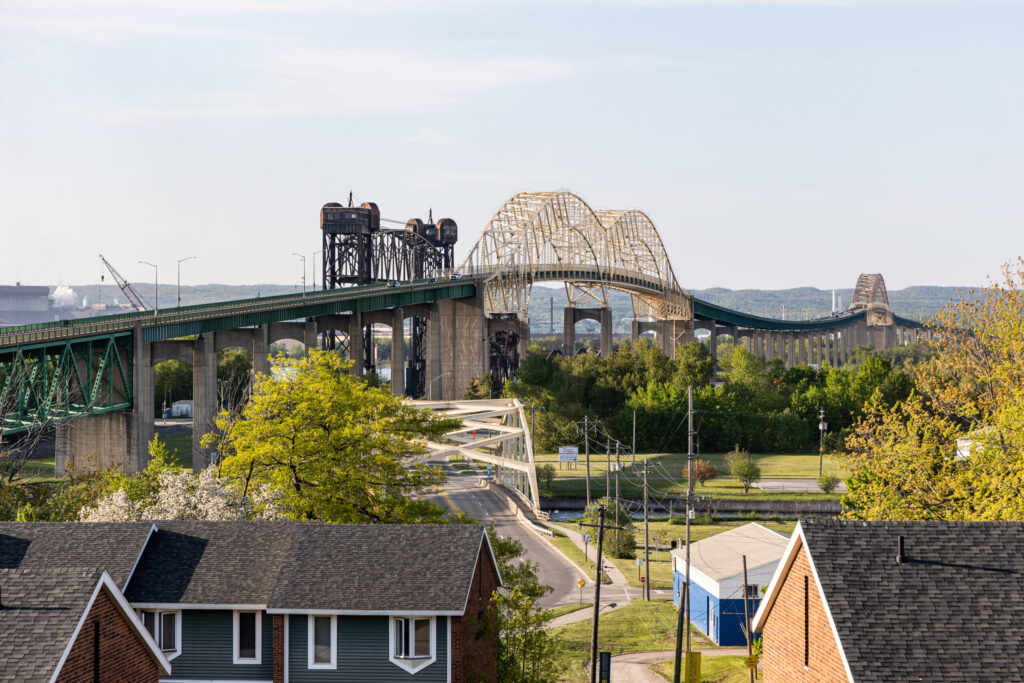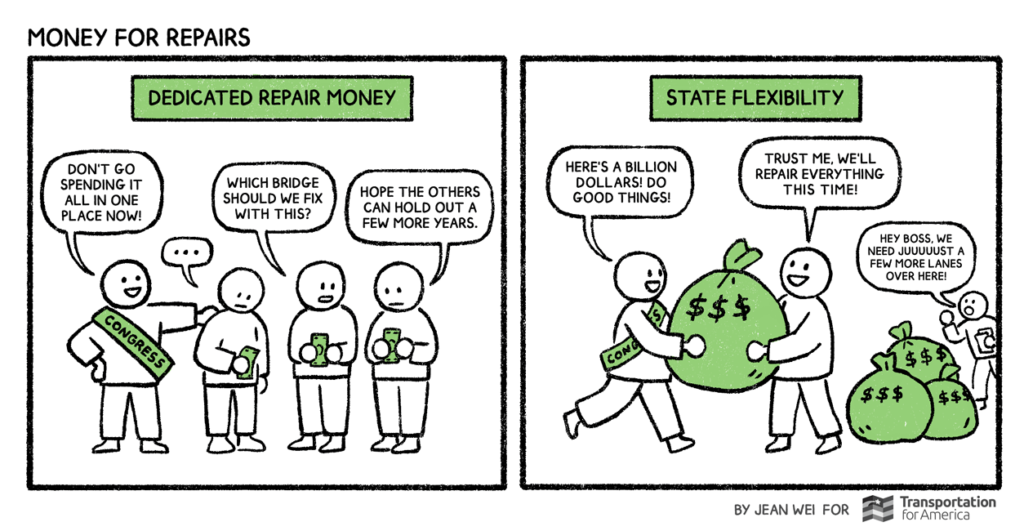
Everyone agrees that repair is important. No one is willing to require it

Despite a fundamental lack of understanding by some members of Congress about the program they’re responsible for overseeing, the law sets states free to spend their federal transportation cash on eligible expenses, however they see fit. Our repair needs will never get addressed until we change this approach.

Please download and share our new illustration above on social media, via email, Reddit, etc. Right click to “save as” or find and share this on Twitter and Facebook with these links.
Every time that we’ve polled voters over the years, we hear that taking good care of our existing infrastructure—repair and maintenance—should be priority #1 for our transportation dollars. Ask any member of Congress and they’ll tell you it’s absolutely a top priority. 1 And every state DOT will tell you that keeping things in a state of good repair is either their top priority or second only to safety.
Everyone seems to agree about the importance of repair, yet everyone in charge seems to recoil when anyone suggests creating hard and fast requirements that states prioritize their repair needs before building new infrastructure they will also have to maintain for decades to come.
After seeing Virginia leaders touting the infrastructure law’s $530+ million to address Virginia’s deficient bridges, Wyatt Gordon in the Virginia Mercury recently asked the obvious question: “Why did more than one in 25 bridges deteriorate into a ‘poor or worse condition’ in a state with a nearly $7 billion annual budget for its Department of Transportation?” T4America director Beth Osborne weighed in:
The more you fail in transportation—the more people die, the more expenses increase, the more bridges collapse, the louder the calls to put more money into the programs that produced that failure in the first place. There is no accountability. These senators who voted for [the IIJA] promise us results every time, but I just heard a bridge fell down in Pittsburgh. How many times do they promise the same results without changing the program that is producing these same failures?
Look, it’s worth noting that not every state performs equally when it comes to prioritizing repair with their flexibility, and some states have made sizable shifts from expansion to repair in the last few years. As the above piece notes, states like Pennsylvania and Massachusetts are already devoting the lion’s share of their budgets toward repair. They’re doing their best to ignore that second voice in the background of the comic pushing the sexy new expansion project.
But most states are not choosing to do this.
This reminds me of what Mississippi DOT commissioner Dick Hall said during a repair-focused event we held in DC in 2019, where he made a plea for Congress to step in and require repair first. “If you want us to prioritize maintenance, then you’re going to have to tell us ‘you gotta do it,” he said. Until Congress does, some states will do well and other states will just punt questions about paying for all the things they’ve built off to their grandkids to figure out.
How bad is this addiction?
Consider the new $43 billion bridge repair formula program that Congress created in the infrastructure law. Even though this money is doled out proportionately to the states with the greatest bridge repair needs and Congress just supercharged the funding to the massive flexible programs that all states can use to build new highways, Congress still decided to allow states to use this dedicated “repair” money to build brand new bridges. USDOT’s guidance on the legislative language made it clear that the law allows “the construction of a new highway bridge on a new alignment” as an eligible project, though USDOT gently encouraged states to focus on bridges in poor or fair condition.
We’ll once again just have to hope that all states can deliver on all the repair promises. And in five years, after the IIJA’s $643 billion has been exhausted, we’ll be right back here lamenting the state of our infrastructure and wondering where all the money went, even as we renew the pleas for more funds to “repair our crumbling infrastructure.”



